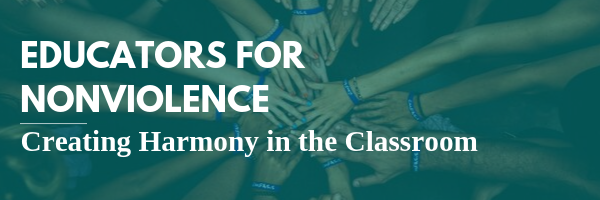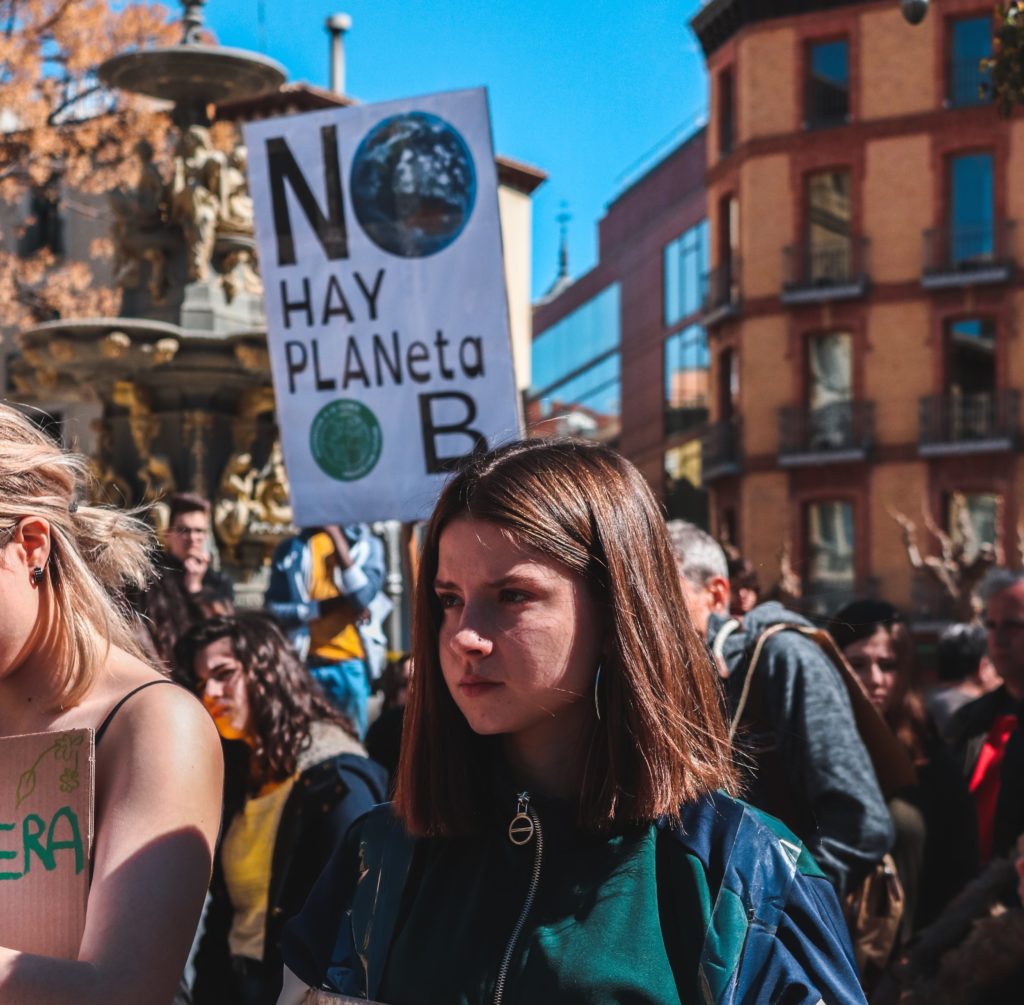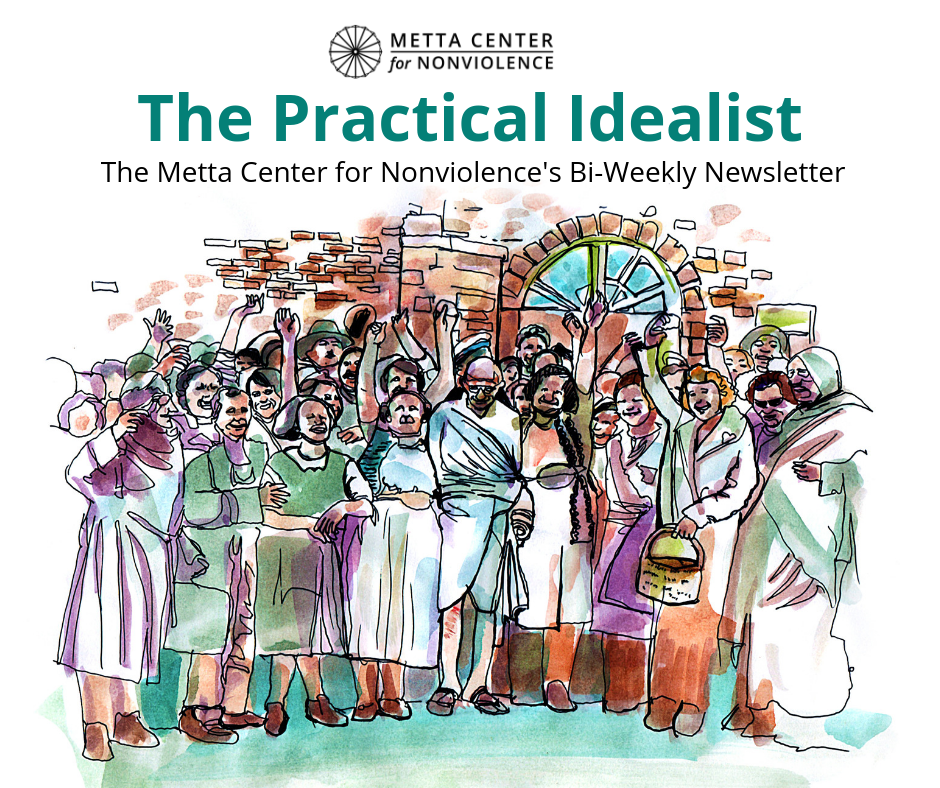I ordered “Gandhi the Organiser” along with some other books last year when I was asked to give a talk at a Stanford leadership conference. The book arrived long after the conference and was not at all what I expected. Instead, it was one of the best, most inspiring books on Gandhi I’ve ever read.
Back when I taught Gandhi in my nonviolence class at Berkeley I always had the students read some standard texts — Eknath Easwaran’s “Gandhi the Man” for the spiritual dimension, B. R. Nanda’s “Mahatma” for the “history” (that is, the political history) — and I also urged them to read one of the day-by-day diaristic accounts by Tendulkar, Mahadev Desai, or others because something qualitatively different emerges when you encounter the sheer intensity of the Mahatma’s daily life and activities. If it had been available at the time I would certainly have recommended “Gandhi the Organiser” for that purpose. But it is much more.
Author Bob Overy, an independent researcher based in the United Kingdom, has produced an excellent in-depth study of the critical phase of the freedom struggle that saw Gandhi’s transition from a force to reckon with in his home state of Gujarat to a national leader. Overy studies this process in insightful detail, piloting his course between “Gandhi the saint” and “Gandhi the freedom fighter” to bring out the gripping story of the Mahatma’s shrewdness and his indomitable will, how he pushed through apparent “failures” with an unstoppable drive that gives credence to his claim that in satyagraha there is no such thing as defeat. Gandhi comes alive in these pages with rare force.
The title may therefore be as misleading for others as it pleasantly surprised me. This book is not like, say, “Gandhi CEO” or others that apply some principles of Gandhian organization to business leaders. The difference, of course, is that Gandhi was not organizing a corporation; he was organizing a revolution, and not just a political upheaval but what we might call an “existential” step forward in human evolution.
Before reading Overy I knew that Gandhi came to put more and more reliance on constructive programme, or CP, and bemoaned the fact that most modern theory and practice tries to get along without this crucial dimension, but I had no idea how nuanced the Mahatma’s approach was to the complementarity between CP and direct resistance, or what I have come to call, as Overy does, constructive vs. obstructive action. Depending on whether you were dealing with a regional or a national issue and whether you were working on a specific issue like the Champaran Satyagraha of 1917 or the ultimate goal of independence, swaraj, Overy is able to identify no less than five positions ranging from situations where CP is not essential and civil disobedience can be effective by itself to those where CP is essential and civil disobedience need not occur at all. (Gandhi even states “civil disobedience, mass or individual, is an aid to constructive effort,” not the other way around).
Fascinating and inspiring as this book is, with its insight into Gandhi’s drive and sagacity, into his lofty vision of human nature, for many of us the most practical part will be the final section where Overy applies what he’s discovered to the problems and possibilities facing activists today. Along with giving constructive program its full meed of attention, he addresses directly the difference between what’s usually called strategic and principled nonviolence. I could not agree more when he writes that, “It appears to me that the attempt to separate the technique of action (i.e. strategic nonviolence) from the background of beliefs and social initiatives which supported it, (the more principled view) has diminished our understanding of the technique.” Or when he adds, “it helps us to understand Gandhi’s technique …as a method of social struggle informed by strongly held positive values, with rules about how we approach people and present ourselves and with the vision of how life could be better, virtually all of which may have some relevance for us.”
By and large, activists and scholars have pretty much stopped talking about the strategic/principled difference because those conversations were getting us nowhere, but there is a way to look at the difference that’s very useful now in terms of a related development, the slowly emerging “paradigm shift” away from what’s often called the “old story,” that frame of reference (still prevalent in political science circles and elsewhere) in which people tend to be seen as rational cost-benefit calculators locked into competitive relationships in a random, essentially material universe. Strategic nonviolence is nonviolence looked at through the lens of this old story. You coerce people into changing their behavior by putting pressure on them, not by awakening their sympathy for the harm they’re causing you. Conflict is still a win/lose proposition, not an opportunity for reconciliation and reunion. Unfortunately, there is no room in this view for what Overy correctly calls “Gandhi’s ultimately religious concept of satyagraha, a force acting on society in mysterious ways” — those “spooky actions at a distance” that even Einstein had a hard time accepting.
In the new story, in its fully developed form, where the world is seen as a field rather than a collection of separate entities — a field of consciousness — and human beings as interconnected nodes of that consciousness, or “evolving spiritual beings” as a friend of mine says, it is much easier to understand how, as Gandhian coworker Raihan Tyabji put it, “His consciousness grabbed hold of our consciousness and moved it to an incredible place,” or why Martin Luther King was able to say so beautifully that “All men (and women) are caught in an inescapable network of mutuality, tied in a single garment of destiny. . . This is the inter-related structure of reality.” And this was before neuroscientists discovered, in 1988, that we are endowed with a network of “mirror neurons” that precisely reflect the actions, thoughts and intentions of others, evidently evolved in the brain to activate that mutuality, making the nonviolent effect or what Gandhi called “moving the heart” possible. Gandhi’s worldview, without understanding which it’s not possible to arrive at a just assessment of his nonviolence, was essentially that of the “new story;” though it was hardly new for him, being in his case largely an extension of the Vedantic worldview that had been taken for granted down the centuries in India’s spiritual traditions.
There is thus a reciprocal relationship between the development of nonviolence and the parallel development of the new story (a subject I go into in my forthcoming book, “The Third Harmony: Nonviolence and the New Story of Human Nature,”). This is of critical importance to us now since, as many are coming to believe, we cannot save the world from climate disaster or the threat of nuclear annihilation unless we change our prevailing paradigm. Trying to force people to stop using fossil fuels, for example, or animal farming without helping them see a new vision of who we are and what we need for our fulfillment will only create a backlash and simply fail or seem to change only to return at the next opportunity.
There are two insights in particular that emerge from this larger viewpoint. One, as mentioned, is the importance of constructive programme. Overy charges, I think justly, that in the West CP has been overlooked along with almost all other aspects of what he calls Gandhi’s religious outlook (and I call the new story): “the principal authorities on nonviolent action have neglected practically all these aspects – with the partial exception of the vow. In particular, the fundamental point that nonviolent action as a method and technique focused just as much on constructive work as campaigns of civil resistance, has been virtually ignored. Yet Gandhi’s success as an organiser cannot be understood unless it is recognized that at the base of every campaign of civil resistance – especially at the national level – was a programme of constructive work.” (Incidentally, that’s what Gandhi himself said: “My main politics is constructive work.”).
The other aspect, referred to in the first part of this quote, can be summed up, as follows: what Gandhi always wanted to do through whatever issue he was addressing at the time was to uplift humanity. To recover the human image that has been and still is so badly damaged by materialism and its commitment to separateness, competition, and violence. Overy quotes approvingly from R. Kumar’s “Essays on Gandhian Politics,” writing that “Gandhi’s romanticism rested upon his attempt to relate political aspirations to moral instead of material objectives; to the flowering of the character and personality of his countrymen rather than to the achievement of economic and social goals.” When Gandhi himself refers to the success of his fast to rally the striking Ahmedabad millworkers in 1918 he describes it as much more than a political victory, as Overy points out: “The sight convinced me… That Indians are still their true selves, capable of realizing the Self within and knowing its power.”
For Gandhi the “sun” of his “solar system” of CP was charkha, the cottage industry of spinning and weaving homespun cloth. Recognizing the full significance of CP for today’s struggles I and my colleagues at the Metta Center have devoted a great deal of thought to the possibility of a modern equivalent. Charkha would (if it had been fully mobilized) recover an industry that was at one time the pride of Asia, restore economic independence to his “starving millions,” and break the hold of the British monopoly on cloth which was among others (like the monopoly on salt) essential for keeping India in their grip. Charkha was also the way to unite the movement itself, as it could be done by everyone every day, whatever else they were working on. It was what I sometimes call a “stealth” weapon because the British didn’t fully grasp its revolutionary significance until it was too late to do anything about it. Indeed, since it was non-confrontational and technically legal (despite its subversive power) it would have been difficult to put a stop to even if they had realized it. A modern equivalent of charkha is a tall order!
We have not come up with anything as concrete as cloth, but we can recommend something that could be done by anyone and everyone, and in the end be just as subversive, we believe, to the prevailing order. As more and more people come to believe that our disastrous political, moral, and ecological situation is based on how we see the world, the vision of ourselves as evolving spiritual beings with the ability to pilot our own destiny in an extremely meaningful universe is taking on tremendous appeal. Hence our candidate for a modern charkha is that we familiarize ourselves with the essentials of the emerging new story and tell that story to whomever is willing to listen. Explain that you’re saving the coral reefs because life is an interconnected whole and you can’t damage any part without hurting the rest, that you are using nonviolence not only because it works but because it doesn’t ravage the human spirit the way violence does, explain above all that we can prevent the catastrophe of the climate crisis if we act in time (i.e. right now), because we are at least to some significant degree agents of our own destiny.
As Buckminster Fuller famously said, “You never change things by fighting against the existing reality. To change something, build a new model that makes the old model obsolete.” That is more true than ever where the model in question is our vision of who we are and what we’re doing in this world.















